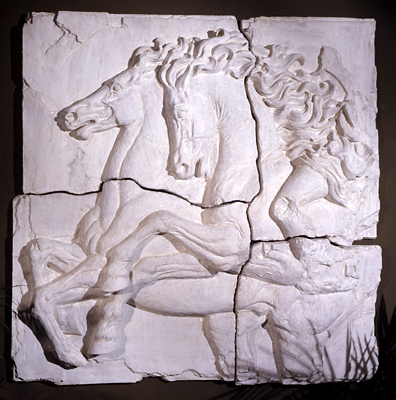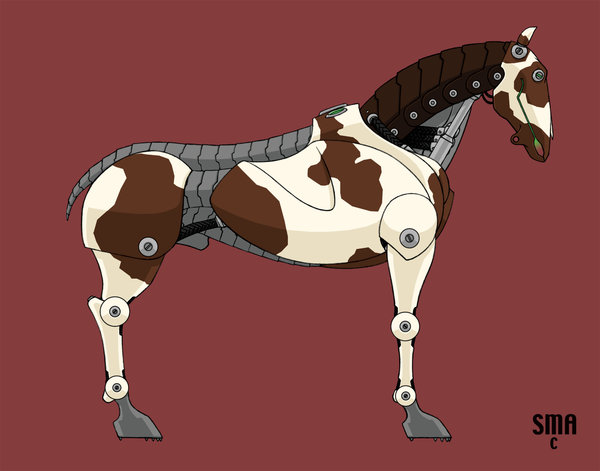
The Push-Button Horse
When I was small, I often watched my mom work, and a great deal of her time was spent helping people find the “right” horse. She was a breeder and a trainer and we often had young, green-broke horses for sale on the farm, but our mature horses (brood mares) were not offered. If a mature horse was needed, she would ask the prospective buyer what he or she was looking for, considered the riders’ skill level and purpose, and go out shopping to find a horse who would be a good match for the riders’ needs and desires. Of particular note was an informal guideline, used when shopping for horses for children—the combined age of the horse and child should be 20 or greater.
Of course, there are exceptions to every rule. As a youngster, I commonly rode young horses, regularly putting first rides on horses well before I could legally drive. There were some horses who were just so sensible, sweet and calm, despite their young age, they could carry a child; and some old horses, who despite being “mature”, were much too nervous, quick or unstable to carry a young or novice rider. But, so far as general rules go, this was a pretty good one.
The rule is not so important to remember, as the spirit of the rule. Essentially, when a horse/rider unit is formed, one or the other must be prepared to support the other in times of need. Children of a young age are extremely vulnerable to the swings of emotion, physical discomfort or boredom. Their attention will drift, and they forget to take care of their horse, or their butt hurts and they don’t want to ride anymore (this usually happens when you’re about 2 miles down the trail, and they want off NOW), or they’re hungry, or tired, or…whatever. At times like this, youngsters can get emotional, and a mature horse will step up and handle the situation. This is a horse who is no stranger to operating in self-carriage, and has the mental and emotional stability to make safe choices without rider contribution. Often, they also are experienced enough saddle horses to know how the rider should feel up there, and are aware of a rider who has lost her balance. It’s not uncommon for a seasoned horse to stop moving, or compensate in some way, for a rider who is about to fall from the saddle. These push-button horses are precious babysitters, and every person who enjoyed riding as a youngster has a fond memory and a story to tell of the horse that took care of them when they were small.
However, there are plenty of horses who are not yet ready to babysit. They are youngsters themselves, still working through fears, anxiety, and balance issues of their own. The idea of taking care of their rider has not yet occurred to them. Some are still trying to figure out how to prevent the human from eating them! Even if they have developed good relationships with humans, and feel safe with their person, there are dangers lurking around every corner, out in the big, big world. The rider of that horse needs to have compassionate understanding of the horse’s current emotional state, and, how to improve it when it deteriorates. In these cases, the human needs to do the babysitting, to guide the horse in understanding his job, tolerating environmental stimuli, and to suggest some things about improving the effectiveness and efficiency of his locomotion.
"In the same way as the “School Rider” deals with the art of influencing or leading a horse that is already obedient, the “Horse Trainer” addresses the way to methodically train the horse to become sensitive and obedient to the rider’s influence, or to train/dress him. There is a great difference between these two ways of treating the horse. This is why I have chosen to discuss each topic separately. This difference is also the reason why skilled riding masters always have been so rare to find, and why the number of skilled riding masters always has been small, compared to the number of good school riders." Ehrengranat
When we are beginning our equestrian education we are dependent upon our horse, to be our teacher and our guide. He takes care of himself, so we can concentrate on not falling off, finding a comfortable seat, and letting go of our fear. Whether we realize it or not, the gentle swaying motion and sound of footfalls teach us about relaxation, rhythm, and natural gaits—how to follow the horse. As children, these lessons often come easily, because we are accustomed to relating to the world as a student, surrendering our control to those who would take care of us. The baby-sitters, the push-button horses, do the thinking for us, so we may concentrate our attention on the most basic of skills. Only when these basic skills of following are mastered, may we request to take the lead, and ask the horse to follow us.
Of course, there are exceptions to every rule. As a youngster, I commonly rode young horses, regularly putting first rides on horses well before I could legally drive. There were some horses who were just so sensible, sweet and calm, despite their young age, they could carry a child; and some old horses, who despite being “mature”, were much too nervous, quick or unstable to carry a young or novice rider. But, so far as general rules go, this was a pretty good one.
The rule is not so important to remember, as the spirit of the rule. Essentially, when a horse/rider unit is formed, one or the other must be prepared to support the other in times of need. Children of a young age are extremely vulnerable to the swings of emotion, physical discomfort or boredom. Their attention will drift, and they forget to take care of their horse, or their butt hurts and they don’t want to ride anymore (this usually happens when you’re about 2 miles down the trail, and they want off NOW), or they’re hungry, or tired, or…whatever. At times like this, youngsters can get emotional, and a mature horse will step up and handle the situation. This is a horse who is no stranger to operating in self-carriage, and has the mental and emotional stability to make safe choices without rider contribution. Often, they also are experienced enough saddle horses to know how the rider should feel up there, and are aware of a rider who has lost her balance. It’s not uncommon for a seasoned horse to stop moving, or compensate in some way, for a rider who is about to fall from the saddle. These push-button horses are precious babysitters, and every person who enjoyed riding as a youngster has a fond memory and a story to tell of the horse that took care of them when they were small.
However, there are plenty of horses who are not yet ready to babysit. They are youngsters themselves, still working through fears, anxiety, and balance issues of their own. The idea of taking care of their rider has not yet occurred to them. Some are still trying to figure out how to prevent the human from eating them! Even if they have developed good relationships with humans, and feel safe with their person, there are dangers lurking around every corner, out in the big, big world. The rider of that horse needs to have compassionate understanding of the horse’s current emotional state, and, how to improve it when it deteriorates. In these cases, the human needs to do the babysitting, to guide the horse in understanding his job, tolerating environmental stimuli, and to suggest some things about improving the effectiveness and efficiency of his locomotion.
"In the same way as the “School Rider” deals with the art of influencing or leading a horse that is already obedient, the “Horse Trainer” addresses the way to methodically train the horse to become sensitive and obedient to the rider’s influence, or to train/dress him. There is a great difference between these two ways of treating the horse. This is why I have chosen to discuss each topic separately. This difference is also the reason why skilled riding masters always have been so rare to find, and why the number of skilled riding masters always has been small, compared to the number of good school riders." Ehrengranat
When we are beginning our equestrian education we are dependent upon our horse, to be our teacher and our guide. He takes care of himself, so we can concentrate on not falling off, finding a comfortable seat, and letting go of our fear. Whether we realize it or not, the gentle swaying motion and sound of footfalls teach us about relaxation, rhythm, and natural gaits—how to follow the horse. As children, these lessons often come easily, because we are accustomed to relating to the world as a student, surrendering our control to those who would take care of us. The baby-sitters, the push-button horses, do the thinking for us, so we may concentrate our attention on the most basic of skills. Only when these basic skills of following are mastered, may we request to take the lead, and ask the horse to follow us.

The push-button horse is invaluable in teaching us to follow, and the green horse is essential in teaching us to lead. We cannot presume to be leaders until we’ve first learned to be followers. A middle-aged person who’s ridden for years may not be any more qualified to lead than a first-time child rider. Neither age nor years of riding experience determine competency on a green horse; skill at following is. The skilled school rider, an experienced rider of push-button horses, will need to learn how to apply “following” in a profoundly dynamic way, to successfully reverse roles with the horse and manage the green horse.
The educated equestrian is the self-aware equestrian; she can accurately assess her skills, to see whether she needs to be supported by the horse, or is ready to offer support. In reality, this is not a static role. All riders need to be flexible and understand they will sometimes lead, sometimes follow, and will need to be able to recognize when the time is right for each.
3.30.12 TME
return to
Educated Equestrian
return to
Educated Equestrian